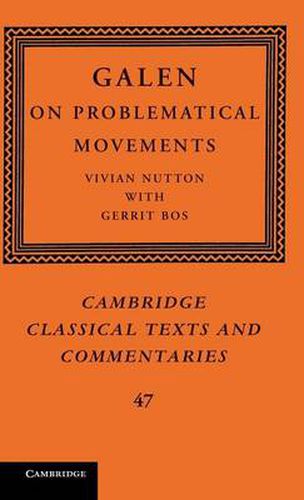Readings Newsletter
Become a Readings Member to make your shopping experience even easier.
Sign in or sign up for free!
You’re not far away from qualifying for FREE standard shipping within Australia
You’ve qualified for FREE standard shipping within Australia
The cart is loading…






In this forgotten treatise, preserved largely in medieval translations into Arabic and Latin, the greatest medical scientist of antiquity investigates the relationship between conscious and unconscious movements. He looks at the structure of the tongue and the oesophagus, and asks why mental perceptions can have physical effects on the body. Some of his questions still trouble modern scientists, although they would not accept most of his answers. The extensive Introduction and Commentary explain the medical background for non-medical specialists, and discuss the place of this treatise and of anatomy in medieval medicine down to Leonardo da Vinci. As well as being the first English translation of this important work, this is also the first comparative study of medieval translations of the same ancient text, and is based on new editions and collations of all three. The Commentary pays special attention to the linguistic elements involved in making these translations.
$9.00 standard shipping within Australia
FREE standard shipping within Australia for orders over $100.00
Express & International shipping calculated at checkout
Stock availability can be subject to change without notice. We recommend calling the shop or contacting our online team to check availability of low stock items. Please see our Shopping Online page for more details.
In this forgotten treatise, preserved largely in medieval translations into Arabic and Latin, the greatest medical scientist of antiquity investigates the relationship between conscious and unconscious movements. He looks at the structure of the tongue and the oesophagus, and asks why mental perceptions can have physical effects on the body. Some of his questions still trouble modern scientists, although they would not accept most of his answers. The extensive Introduction and Commentary explain the medical background for non-medical specialists, and discuss the place of this treatise and of anatomy in medieval medicine down to Leonardo da Vinci. As well as being the first English translation of this important work, this is also the first comparative study of medieval translations of the same ancient text, and is based on new editions and collations of all three. The Commentary pays special attention to the linguistic elements involved in making these translations.